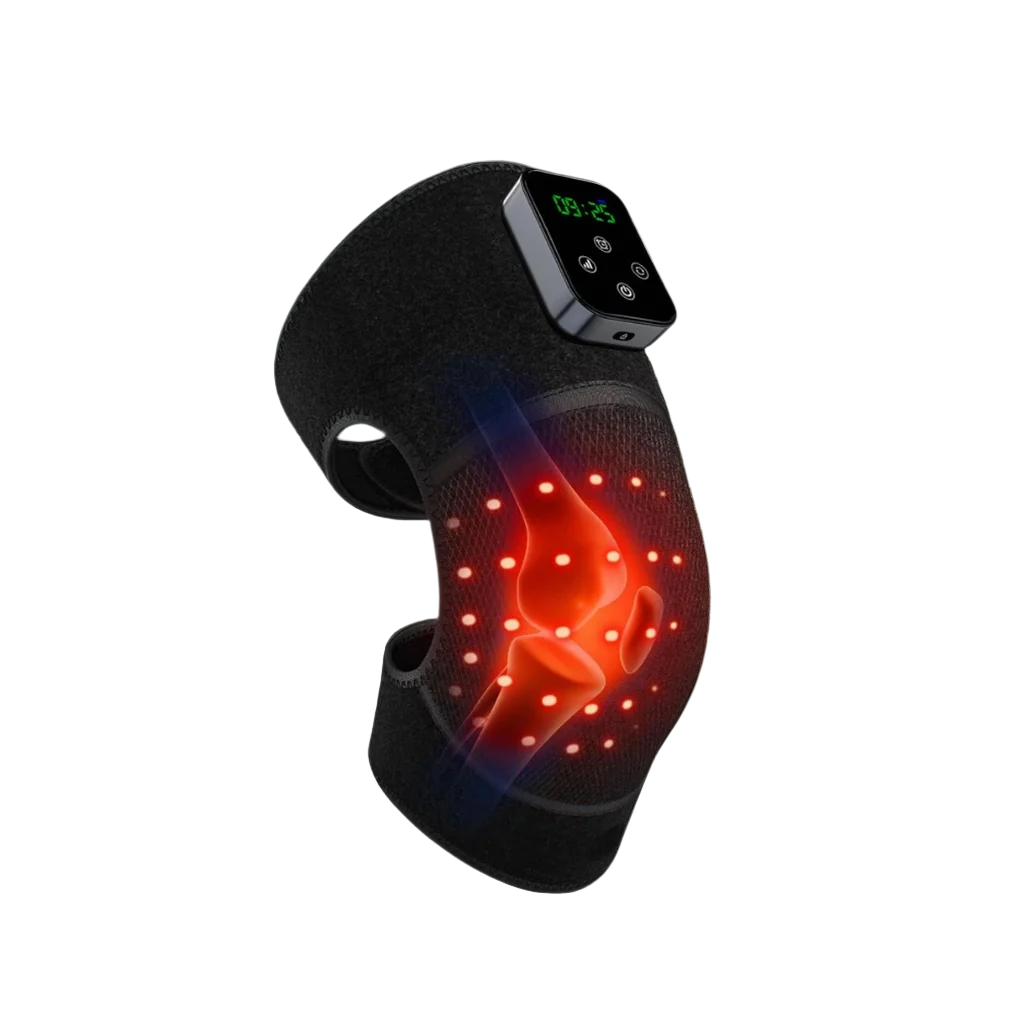How to Use Red Light Therapy for Knee Pain (2025 Guide)
Introduction
Knee pain affects millions of people worldwide, whether caused by arthritis, sports injuries, aging, or overuse. Traditional solutions such as painkillers or surgery may not always be ideal due to side effects or recovery time. This is where red light therapy (RLT) comes in—a safe, non-invasive, and scientifically backed method to reduce pain and promote healing.

1. What Is Red Light Therapy?
Red light therapy is a treatment that uses specific wavelengths of light—usually red (around 660nm) and near-infrared (around 850nm)—to penetrate deep into the skin and tissues. These wavelengths stimulate cellular energy production, enhance blood circulation, and support natural healing processes.
2. How Does Red Light Therapy Help with Knee Pain?
- Boosts Circulation: Improves oxygen and nutrient flow to knee tissues.
- Reduces Inflammation: Helps lower joint swelling and stiffness.
- Accelerates Healing: Supports recovery from sports injuries and post-surgery.
- Alleviates Chronic Pain: Provides relief from arthritis and long-term knee pain.
3. Benefits of Red Light Therapy for Knees
Using RLT consistently can provide the following benefits:
- Pain relief without medication
- Improved mobility and flexibility
- Enhanced collagen production for joint health
- Accelerated post-exercise muscle recovery
- Non-invasive and safe for long-term use
4. Step-by-Step Guide: How to Use Red Light Therapy for Knee Pain
Step 1: Choose the Right Device
Select a high-quality knee pad device that emits both red and near-infrared light. The Nicebeam Red Light Therapy Knee Pad is an excellent choice for home use.
Step 2: Position the Device
Wrap the pad around your knee, ensuring it covers the affected area. The built-in LEDs should be in close contact with your skin for maximum absorption.
Step 3: Set the Power Level
Start with a lower power setting (P1 = 3W) if you’re new to RLT, then gradually increase to higher settings (P2 = 5W or P3 = 8W) as your body adapts.
Step 4: Select the Timer
Sessions typically last between 10–30 minutes. Beginners should start with shorter sessions and increase over time.
Step 5: Use Consistently
For best results, use the device 3–5 times per week. Consistency is key for long-term pain relief and healing.
5. Nicebeam Red Light Therapy Knee Pad – Features & Advantages

The Nicebeam Red Light Therapy Knee Pad is designed for ultimate convenience and effectiveness. Here are its key features:
- Size: 55 x 28 cm (21.65 x 11.2 inches)
- Power Levels: P1 = 3W, P2 = 5W, P3 = 8W
- LEDs: 40 total (20 x 660nm red light, 20 x 850nm near-infrared)
- Modes: Combination of red + near-infrared therapy
- Battery: 3000mAh rechargeable with USB-C charging
- Timer: Adjustable (10, 20, or 30 minutes)
- Portable: Lightweight and easy to carry
Its benefits include:
- Ultimate pain relief and joint comfort
- Accelerated recovery from injuries
- Revitalized skin and improved circulation
- Portable, rechargeable, and easy to use anywhere
- Customizable healing experience with multiple modes
6. Safety Tips and Precautions
- Do not exceed recommended session times.
- Consult a doctor before use if you have severe injuries or implants.
- Avoid looking directly at the LEDs without eye protection.
- Stop use immediately if you experience discomfort.
7. Who Can Benefit from Red Light Therapy?
Red light therapy is ideal for:
- People with arthritis or joint stiffness
- Athletes recovering from injuries
- Seniors with mobility issues
- Post-surgery patients
- Anyone seeking non-invasive pain management
8. Comparison with Other Knee Pain Relief Methods
- Painkillers: Quick relief but possible side effects.
- Physical Therapy: Effective but requires regular appointments.
- Surgery: Expensive and high recovery time.
- Red Light Therapy: Non-invasive, safe, affordable, and can be done at home.